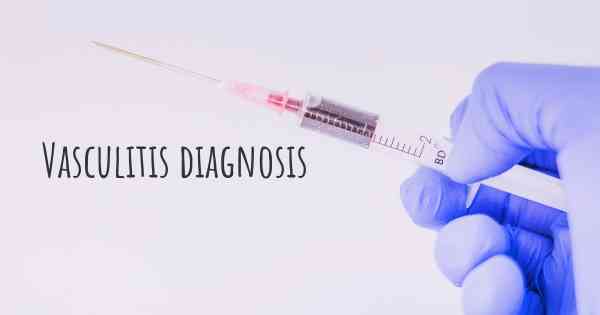How is Vasculitis diagnosed?
See how Vasculitis is diagnosed. Which specialists are essential to meet, what tests are needed and other useful information for the diagnosis of Vasculitis

How is Vasculitis diagnosed?
Vasculitis is a group of rare diseases characterized by inflammation of blood vessels, which can affect various organs and tissues in the body. Diagnosing vasculitis can be challenging as its symptoms can mimic those of other conditions. However, a combination of medical history, physical examination, laboratory tests, and imaging studies can help in the diagnosis of vasculitis.
Medical History
The first step in diagnosing vasculitis is a detailed medical history. The doctor will ask questions about the patient's symptoms, their duration, and any factors that may trigger or worsen them. It is important to provide accurate information about any previous medical conditions, medications, or recent infections, as these can be associated with the development of vasculitis.
Physical Examination
A thorough physical examination is crucial in identifying signs of vasculitis. The doctor will carefully examine the patient's skin, joints, and organs to look for any abnormalities. They may check for rashes, ulcers, joint swelling, or enlarged lymph nodes, which can be indicative of vasculitis. The presence of specific physical findings can help guide further diagnostic tests.
Laboratory Tests
Laboratory tests play a vital role in diagnosing vasculitis. Blood tests are commonly performed to assess various parameters that can indicate inflammation and organ involvement. Some of the important blood tests include:
- Complete blood count (CBC): This test helps evaluate the number and types of blood cells. An increased number of white blood cells or abnormal cell counts may suggest vasculitis.
- Erythrocyte sedimentation rate (ESR) and C-reactive protein (CRP): These tests measure the level of inflammation in the body. Elevated levels can indicate the presence of vasculitis.
- Autoantibody tests: Certain autoantibodies, such as antineutrophil cytoplasmic antibodies (ANCA) and rheumatoid factor (RF), are associated with specific types of vasculitis. Detecting these antibodies can help in diagnosing the underlying cause.
- Complement levels: Complement proteins are involved in the immune response. Abnormal levels can suggest vasculitis.
- Other specific tests: Depending on the suspected type of vasculitis, additional tests may be performed to detect specific antibodies or markers associated with that particular condition.
Imaging Studies
Imaging studies are often used to visualize blood vessels and detect any abnormalities. The choice of imaging technique depends on the suspected area of involvement. Some commonly used imaging studies include:
- Angiography: This procedure involves injecting a contrast dye into the blood vessels and taking X-ray images. It helps visualize the blood flow and identify any narrowing, blockages, or abnormalities in the vessels.
- Magnetic resonance imaging (MRI): MRI uses powerful magnets and radio waves to create detailed images of the body. It can provide information about the structure and inflammation of blood vessels.
- Computed tomography (CT) scan: CT scan combines X-rays and computer technology to produce cross-sectional images of the body. It can help identify abnormalities in blood vessels and organs.
- Ultrasound: Ultrasound uses sound waves to create real-time images of blood vessels. It can help assess blood flow and detect any abnormalities.
Biopsy
In some cases, a biopsy may be necessary to confirm the diagnosis of vasculitis. A small sample of affected tissue, such as skin, muscle, or an organ, is removed and examined under a microscope. This can help determine the type and severity of vasculitis and guide treatment decisions.
Consultation with Specialists
Diagnosing vasculitis can be complex, and it often requires the expertise of multiple specialists. Rheumatologists, dermatologists, nephrologists, and other specialists may be involved in the diagnostic process, depending on the organs affected. They collaborate to interpret the results of various tests and provide a comprehensive diagnosis.
In conclusion, diagnosing vasculitis involves a combination of medical history, physical examination, laboratory tests, imaging studies, and sometimes a biopsy. It is important to consult with healthcare professionals to accurately diagnose vasculitis and develop an appropriate treatment plan.
Posted Feb 28, 2017 by Patricia Youngross 1000
Posted Mar 30, 2017 by Annie Ann-Magritt 1000
We review the c-reactive protein, and number of eosinophils
Posted Sep 12, 2017 by Virginia 2000








